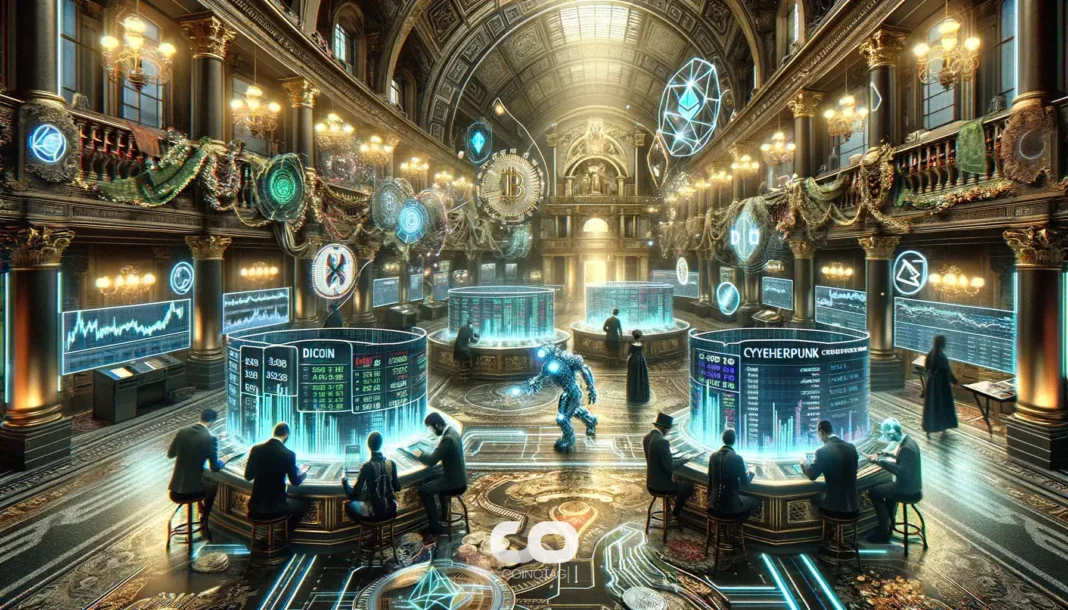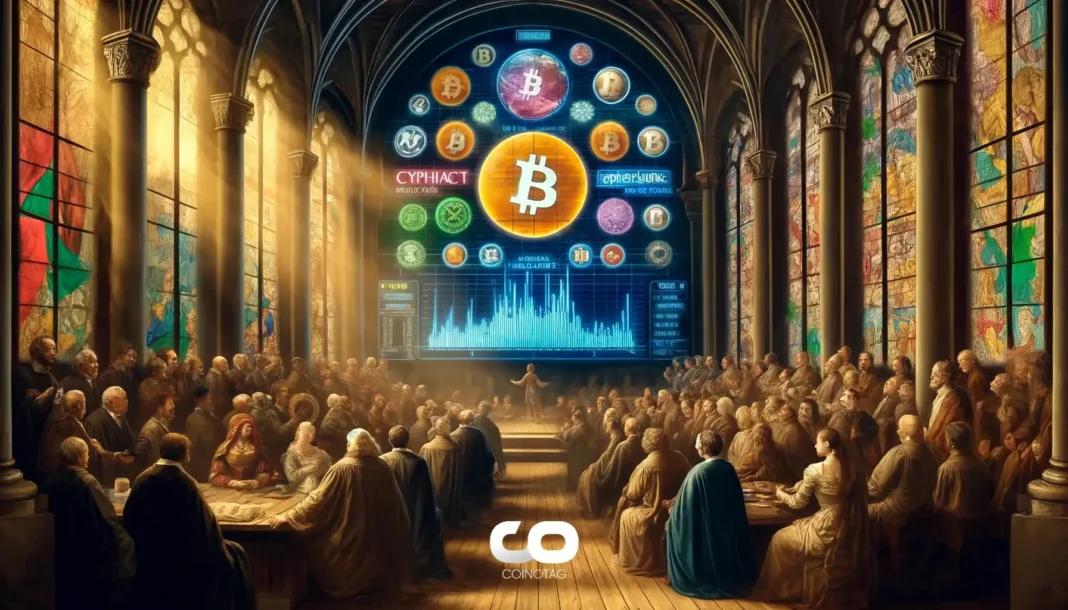Decentralized AI is often mistakenly equated with blockchain technology, which can stifle innovation by forcing projects into unsuitable frameworks for funding and community access.
-
Web3 ideals emphasize user ownership and permissionless innovation, which can be achieved without blockchain.
-
Many decentralized AI projects are adopting blockchain not for technical reasons, but to access funding and resources.
-
Technological pluralism is essential; blockchain should be a tool, not a requirement for decentralized AI solutions.
Discover how the misconception of decentralized AI as blockchain-centric is limiting innovation and what the future holds for true decentralized solutions.
What is the Misconception of Decentralized AI?
The term decentralized AI has become synonymous with blockchain technology, leading to a misunderstanding that harms innovation. Projects often conform to blockchain frameworks not for technical merit but to secure funding and community support.
Why is Blockchain Not Always Necessary for Decentralized AI?
Many decentralized AI initiatives, such as federated learning, demonstrate that blockchain is not a prerequisite. These projects can maintain data privacy and collaboration without the complexities of blockchain integration.
Frequently Asked Questions
What are the key differences between decentralized AI and blockchain AI?
Decentralized AI focuses on distributed systems and user ownership, while blockchain AI emphasizes tokenization and on-chain processes.
How can decentralized AI thrive without blockchain?
Decentralized AI can leverage various technologies, such as federated learning and P2P networks, to achieve its goals without relying on blockchain infrastructure.
Key Takeaways
- Decentralized AI is not synonymous with blockchain: The two concepts can coexist but should not be conflated.
- Innovation requires flexibility: Projects should choose the best tools for their needs rather than conforming to external pressures.
- Community support is vital: Embracing diverse technological approaches can lead to more successful decentralized AI solutions.
Conclusion
As the landscape of decentralized AI evolves, it is crucial to recognize the limitations imposed by a blockchain-first mentality. By embracing a broader array of technologies, the potential for innovation can be fully realized, paving the way for a more effective and inclusive future in AI.

Web3 AI projects often force blockchain integration to access capital, harming innovation by prioritizing ecosystem compatibility over practical AI solutions.
Opinion by: Samuele Marro, PhD student in machine learning at the University of Oxford
The Web3 AI space has fallen into a trap. Somewhere along the way, “decentralized AI” became synonymous with “blockchain AI.” This false equivalency actively harms innovation.
Excellent decentralized AI projects contort themselves into blockchain frameworks, not because it makes technical sense, but because that’s the only way to access Web3 funding, expertise, and communities. The blockchain-first mentality isn’t just limiting what decentralized AI could become; it’s cannibalizing it.
Web3 is not blockchain
Web3 ideals emerged from cypherpunk: trustlessness, permissionlessness, censorship resistance, and user ownership. The industry has forgotten a critical distinction: Web3 philosophy differs from blockchain technology. BitTorrent is Web3. Tor is Web3. IPFS is Web3. And now that Web3 AI is at the center of the hype, many find blockchains are often ill-suited.
Jump into any Web3 AI space, and you’ll see the same pattern repeating: brilliant teams building distributed learning networks, peer-to-peer (P2P) AI marketplaces, and distributed training systems, all awkwardly explaining why they need a token or how their on-chain settlement works.
As a counterexample, consider federated learning, where multiple nodes collaborate to train a shared AI model while keeping their raw data private. This is a prime example of decentralized AI: No tokens are required.
That isn’t to say blockchain is never useful. On-chain settlement can simplify payments between AI agents, cryptographic proofs can improve reputation systems, and tokens can align incentives in collaborative training. But those are specialized tools, not one-size-fits-all solutions. For many decentralized AI problems, blockchain overhead only adds latency, complexity, and cost.
A game of incentives
Why do projects make these decisions? The answer lies in how the Web3 ecosystem has evolved. Projects that don’t integrate blockchains aren’t considered “Web3” and thus can’t access Web3 funding pipelines, expert networks, or community resources. In their thesis, venture funds with “Web3” built investment criteria around blockchain integration. Web3 AI spaces treat non-blockchain projects as out of scope.
These incentives drive teams to adopt blockchain not for product reasons but for ecosystem access. In other words, they’re making architectural decisions based on fundraising requirements rather than optimal user outcomes. There’s nothing wrong with playing the game, but it means that many opportunities for genuine (and profitable) applications of decentralized AI are being overlooked.
The industry must recognize that three distinct concepts have been artificially bundled together.
Related: Can blockchain supply the guardrails to keep AI on course?
Decentralized AI includes distributed computing, federated learning, P2P networks, and edge computing, none of which inherently require blockchain infrastructure.
Crypto-integrated AI involves token incentives, cryptographic proofs, digital asset management, and legitimate use cases that can be implemented using blockchains.
Web3 AI represents user ownership, permissionless innovation, and community governance, which can be achieved through multiple technological approaches.
These concepts can work together beautifully, but they don’t need to. A federated learning network can use cryptographic privacy guarantees without touching a blockchain. A distributed AI marketplace can implement reputation-based validation without smart contracts. Incentive systems can operate through consensus mechanisms that don’t require the overhead of a whole blockchain infrastructure.
Decentralized AI needs a toolbox
True innovation in decentralized AI requires technological pluralism, with blockchain being a tool in the toolkit, not a religious requirement. The most successful projects of the next decade will be those that choose the right architecture for their specific challenges, not those that conform to current ecosystem expectations.
Web3 funding and community support must evolve to embrace non-blockchain decentralization. Venture funds can get substantial returns on decentralized and aligned projects with Web3, even if their funding model is not token-based.
Communities should celebrate permissionless innovation regardless of its technical substrate. For example, numerous decentralized AI ecosystems exist beyond crypto, both nonprofit and for-profit. Prime Intellect has trained large language models at scale while preserving decentralization. The Massachusetts Institute of Technology’s NANDA is building a decentralized internet of agents. LAION is democratizing AI research.
These systems achieve genuine decentralization; they don’t carry a blockchain badge and are invisible to much of the Web3 community. Even in the more traditional Web3 AI space, however, there are positive signals from projects that use blockchains only when it makes sense.
Numerai uses the chain to manage stakes for models developed by the community, rewarding the best-performing ones. Torus Network distributes token rewards transparently to the agents that contribute the most to its long-term growth while capturing the network value in the token. Render Network’s token-based payment means that anyone, anywhere, can provide compute to its render farm. All of these applications are already here.
The current blockchain-first approach is constraining innovation in decentralized AI precisely when it’s needed the most. As AI systems become more powerful and centralized, there’s a desperate need for decentralized alternatives. But they won’t be achieved if the ecosystem keeps forcing every solution through the blockchain bottleneck. The projects that shed this inefficient mindset today will dominate the ecosystem tomorrow.
Web3 AI faces a choice: continue cannibalizing decentralized AI with blockchain requirements or liberate it to achieve its full potential. The technology is ready. The question is whether the ecosystem is ready to evolve and who can capitalize on this change.
Opinion by: Samuele Marro, PhD student in machine learning at the University of Oxford.





